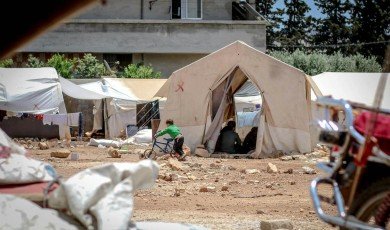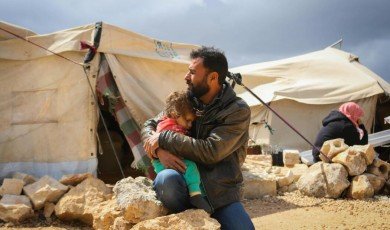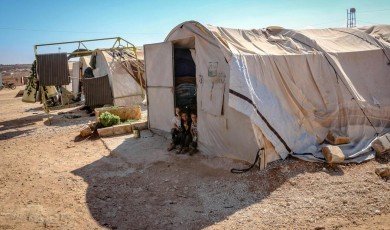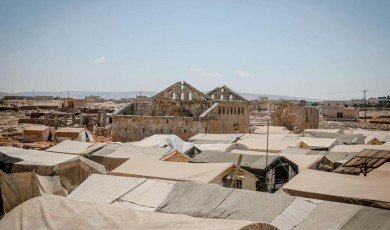
Every year, thousands of migrants and refugees arrive in New York City, seeking safety, new beginnings, and access to essential services—including healthcare. However, for many, the journey to well-being is hampered by a significant and often-overlooked obstacle: the language barrier. Understanding the differences between migrants and immigrants, and what each term means in the context of health, is crucial. Migrants are individuals who move to a different country temporarily or permanently, often for work or safety, while immigrants usually refer to those moving to another country to settle permanently. Regardless of these distinctions, one shared experience is the challenge of navigating a new healthcare system when English isn’t their first language.
For NYC’s diverse migrant and refugee communities—representing hundreds of languages—access to accurate health information is not just a matter of convenience; it’s a matter of life and death. Misunderstandings arising from language gaps can lead to misdiagnosis, missed appointments, confusion about medication, and a general sense of alienation from the care system. Medical translation services are the critical bridge that connects migrants to the health care they deserve, ensuring that language is no longer a barrier to good health. In this in-depth post, we explore how translation services empower migrants, refugees, and even healthcare providers, playing an essential role in life sciences translation and accessible care.
Medical Translation: An Essential Service for Migrants and Refugees
The Scope of the Challenge
Imagine arriving in a city as vibrant as New York, only to find that every doctor’s visit or hospital trip is clouded by confusion, fear, or misunderstanding. For nearly half of all NYC residents who speak a language other than English at home, this is reality. Among these, newly arrived migrants and refugees are especially vulnerable, often without family or community support to help navigate healthcare bureaucracies. Many have endured traumatic journeys, leaving countries in turmoil or fleeing conflict, and are at heightened risk for both physical and mental health conditions.
The consequences of language barriers are profound. According to studies cited by the Migration Policy Institute, non-English speakers face significantly higher rates of hospital readmission, adverse medical events, and even mortality. Understanding consent forms, aftercare instructions, or even the nuances of a medical diagnosis is paramount. For health professionals and service providers, serving a linguistically diverse population presents enormous logistical and ethical challenges. Hospitals in NYC and major cities globally are increasingly turning to specialist medical translation services to bridge these gaps.
Why Medical Translation is Different
Medical translation is a specialized form of life sciences translation. Unlike generic document translation, it requires an expert understanding of medical terminology, local dialects, cultural norms, and, above all, accuracy. Poor translations can have devastating repercussions, from allergic reactions to inappropriate treatments or surgical errors. For migrants and refugees, who may already be distrustful or unfamiliar with Western medicine, clear communication can mean the difference between recovery and prolonged illness.
Professional medical translation includes not only written documents—such as consent forms, treatment plans, prescriptions, and health education materials—but also oral translation or interpretation during consultations. This ensures that migrants understand their rights, options, and next steps. Furthermore, accurate translation respects cultural sensitivities, which can greatly affect willingness to seek care or follow a prescribed regimen.
Global Best Practices: Translation in Action
Healthcare providers worldwide are innovating to make care accessible to migrants through language support. In NYC, hospitals now routinely contract with multi-lingual interpreters, offer translated discharge instructions, and partner with community organizations to produce health education tailored to migrant communities. In Sweden and Canada, for example, interpreters are present at all refugee health assessments, while Australia offers language hotlines for real-time access to interpreters 24/7.
What’s more, government agencies and non-governmental organizations have begun to recognize the importance of medical translation services as a human right. In the U.S., the Civil Rights Act mandates access to language assistance for patients with limited English proficiency, meaning that hospitals accepting federal funds must provide language interpretation free of charge. However, gaps remain, especially for rare languages or dialects and for written materials not often translated.
The digital revolution is also playing a role. Technology platforms now offer instant access to interpreters via video or phone calls, and machine translation, while imperfect, can provide first-line support. However, it’s professional, human translators with expertise in life sciences translation who remain essential for accuracy and trust.
Real Stories: Impact on NYC’s Migrants and Refugees
Consider the story of Amal, a Syrian refugee living in Queens. When her daughter developed a severe allergy, navigating emergency care without fluent English was overwhelming. Thanks to a specialist medical interpreter, she was able to detail her daughter’s symptoms, discuss treatment options, and understand the follow-up care required. “It was the first time I felt really understood,” Amal recalls. “It saved my daughter’s life.”
NYC’s public hospitals, aware of such stories, have expanded their language access programs, training front-line staff in culturally competent care and ensuring crucial documents are available in their twenty most common languages. Still, community advocates stress that there is more to be done, particularly in outreach and proactive translation of public health alerts, vaccine information, and mental health services.
The Role of Life Sciences Translation in Migrant Health
Life sciences translation extends beyond clinical encounters. Migrants often need to access information about complex public health topics—whether it’s pandemic protocols, vaccinations, or navigating chronic diseases like diabetes. Accurate translation enables public health campaigns to reach everyone, regardless of background.
Moreover, life sciences translation supports research initiatives that include migrants and refugees, ensuring equitable participation in medical studies and public health policy formation. Without it, health disparities persist, and the most vulnerable remain unheard.
Many healthcare providers partner with reliable companies that specialize in life sciences translation capable of handling life sciences content, regulatory documents, and patient-facing materials with equal effectiveness. This guarantees compliance with legal requirements, ethical standards, and above all, patient safety.
A Healthier Future Through Language Access
Language access in healthcare is not a privilege—it’s a necessity. Migrants and refugees enrich the fabric of NYC and countless other cities around the world, bringing resilience, diversity, and new perspectives. Yet, linguistic barriers remain one of the greatest threats to their health and well-being. Medical translation and interpretation services are at the front lines, transforming the migrant experience from one of isolation to one of inclusion and understanding.
For healthcare providers, policymakers, and advocates, the message is clear: invest in robust language support systems and specialized life sciences translation to ensure no one is left behind. Whether through in-person interpreters, telephone hotlines, translated materials, or digital solutions, every effort counts towards building a healthier, more equitable society.
If you’re involved in healthcare or community services, consider the far-reaching impact of professional translation on your most vulnerable clients. Breaking down language barriers today could save lives tomorrow and create a foundation for trust, respect, and collaboration. Together, we can ensure that every migrant and refugee receives the care and compassion they deserve—no matter where they come from or what language they speak.





